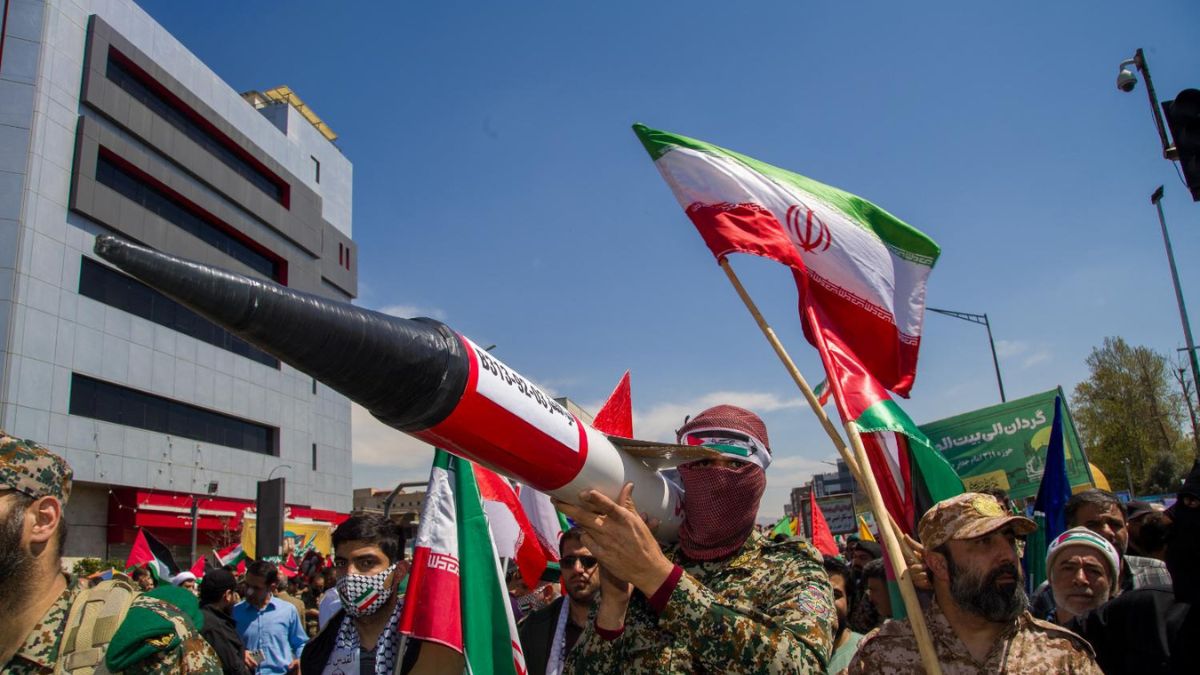The US has been trying hard for a few decades to ensure that the Islamic Republic of Iran falls — a situation that has escalated now, thanks to the additional reason that Iran and Israel have renewed their conflict. Ironically, unseating the Shah (Pahlavi dynasty) of Iran in 1978-79 and putting Ayatollah Ruhollah Musavi Khomeini at the helm after the Islamic Revolution was backed by the CIA. The Americans make this mistake time and again. The US invariably attacks such Muslim governments that are relatively moderate. It’s difficult to believe Washington does not see the pattern in its interventions in the Islamic world since the 1970s, which has proved counterproductive time and again.
In 2011, an agitation sponsored by the US replaced a moderate Hosni Mubarak with the Muslim Brotherhood’s Mohamed Morsi in Egypt. It was part of the so-called Arab Spring that saw a wave of anti-government protests, uprisings and armed rebellions that swept through various countries in the Arab world during the early 2010s. It all began in Tunisia as a response to alleged corruption and economic stagnation, before spreading to Libya, Egypt, Yemen, Syria and Bahrain. Several rulers were ousted, such as Zine El Abidine Ben Ali of Tunisia in 2011, Muammar Gaddafi of Libya in 2011 and Ali Abdullah Saleh of Yemen in 2012, besides Mubarak of Egypt around the time.
The region witnessed riots, civil wars and insurgencies. While major demonstrations occurred in countries like Morocco, Iraq, Algeria, Lebanon, Jordan, Kuwait, Oman and Sudan, smaller protests were held in Djibouti, Mauritania, Palestine, Saudi Arabia and the Moroccan-occupied western Sahara. The uprisings, many of which were not-so-covertly supported by the CIA, led to the replacement of moderate Muslim rulers with fundamentalist Muslim leaders.
Bashar al Assad is a moderate, but the US backs Islamic hardliner rebels in Syria whereas Saudi Arabia and its neighbouring kingdoms never draw the ire of the Pentagon, much as intelligence reports suggest they are the prime sponsors of Islamist terrorism across the globe. Imagine why the home country of Osama bin Laden was never affected by the Islamic State (aka ISIS) but neighbouring Iraq and Syria were. Sources in Indian intelligence say most Muslim rioters in India are sponsored by sheikhs (who can be disowned by the kingdoms as ‘non-state actors’ like Pakistan denies that its ISI runs Lashkar-e-Taiba — a convenience of deniability).
Impact Shorts
View AllThink of women moving around in mini-skirts and gowns in Afghanistan under Mohammad Najibullah Ahmadzai till the 1980s and Afghan women under the Taliban now. The US had created the Taliban to oust Soviet troops from that country. What a Frankenstein’s monster that it chased away the US troops eventually in 2021!
Consider women in Libya under Gaddafi and those under Hussein’s Iraq and the condition of Libyan and Iraqi women now. Remember, the most dangerous Islamic terrorist organisation ISIS reared its head in Iraq only after Hussein fell.
Apparently, when the world rose against the police action on Iranian women not wearing the hijab last year, that was a CIA-sponsored ‘revolution’ too. A few friends who had returned from Iran that year told this columnist that they had seen no oppression of the sort in Iran and that the ‘feminist’ movement was largely the handiwork of a few propped-up activists. The propaganda that a cleric-dominated regime was torturing ‘freedom-loving’ Iranian women was a ploy to break Iran. We never know what kind of a puppet government the Americans will put in place if the Shi’ah reign is replaced by a ‘secular’ administration. In the name of upholding democracy, the replacement may turn out to be all the more radical.
Where this puts India
This American interventionist policy in Islamic countries has generally inconvenienced India. Iran is neither a friend nor a foe but can prove a useful idiot to drive a wedge in the ummah.
Further, Iranian petroleum is cheaper than Saudi petroleum, which India had to stop importing due to the US sanctions on Iran. The Russia-Ukraine war bailed us out because Russia then became the other alternative shop to buy crude oil from, but Russian oil wouldn’t remain as cheap for India (and China) as it became post-2022 if the US were to allow Vladimir Putin administration to once again sell oil and gas to all countries.
Then, India has had an agreement for the Chabahar port since 2003 to counter Pakistan’s Gwadar port, brought under the CPEC in 2015, but India’s alternative sea route to the Suez Canal and sea-plus-land route to Afghanistan has not materialised so far because every time we made some progress in completing the project, fresh US sanctions were slapped on Iran.
Now Israel and Iran are at war, which is complicating matters for India further, as Israel is certainly a friend while Iran is not our enemy. The solution that works for India is good sense prevailing on Iran that stops backing Hamas and Hezbollah and patches up with Israel the way Arab countries are now drawing close to the nation of Jews. In the possible truce, Israel needs to forget that Iran’s Revolutionary Guards helped establish Hezbollah during the 1982 Lebanese war. In turn, Iran could overlook the fact that in 2018, Israeli forces engaged in confrontations with Iranian forces in Syria while Israel also provided support to rebels in Iran, like the People’s Mujahedin, and carried out airstrikes against Iranian allies in Syria. Additionally, Israeli involvement extended to the assassination of Iranian nuclear scientists.
The Iran-Israel proxy conflict or cold war is serving neither side. The world will do well to let a Shi’ah-Sunni balance prevail in the Islamic world by not turning irreconcilably hostile to Iran. Once a compromise is reached, Jews, being in influential positions in the US, can then try to soften Washington’s Tehran policy.
The author is a senior journalist and writer. Views expressed in the above piece are personal and solely that of the author. They do not necessarily reflect Firstpost’s views.
)